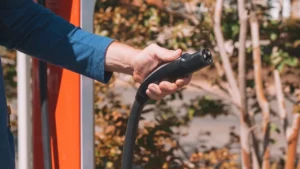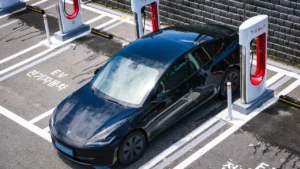
For the spectators, it is a thrilling, adrenaline-filled 24-hour race that only the Circuit de La Sarthe is capable of providing. For the teams, and in particular the drivers, it is a much longer and more intense event. From rest periods to eating, here’s how the Ferrari 499P drivers experienced the Centenary 24 Hours of Le Mans, the fourth round of the FIA WEC 2023, when they weren’t busy behind the steering wheel.
Sleep. Arriving rested at the 24 Hours of Le Mans is a key objective to achieve, not to mention the ability to recover energy during the race itself. Each driver’s bed is only a few metres from the pit box, located inside the motorhome dedicated to the Ferrari crews. “For the first time after several editions, I didn’t sleep during the race this year,” says James Calado, driver of the winning number 51 499P. A different strategy, however, was followed by crewmate Alessandro Pier Guidi: “I slept, sure, but no more than four hours during the entire race. For us, the commitment lasts much longer than 24 hours: just think that we have to wake up on Saturday morning and until Sunday evening we are busy on the track.”
The method followed by Antonio Giovinazzi, the third driver on the top step of the podium in France, is rather particular: “Over the course of the 24 hours I did some ‘micro-naps’, short rest cycles which I had trained for in the weeks leading up to the French event, following the instructions from my athletic trainer,” says the Italian driver, who got a bit of sleep on several occasions: from 10.50 p.m. on Saturday evening, from 6.10 a.m. and from 11.55 a.m. on Sunday. How is it possible to train yourself to fall asleep quickly? “You have to follow a routine,” he outlines. “Close your eyes, take deep breaths, feel your body as best you can. And listen to relaxing music, such as the sound of the Tibetan flute, which I listen to on my headphones when I’m on the track during breaks and it helps me manage my adrenalin.”
It is difficult to get to sleep during a sporting event so full of intensity and adrenaline. That’s what Antonio Fuoco thinks, the driver of the number 50 499P, which started in pole position and finished fifth at Le Mans: “I didn’t sleep in the true sense of the word, but I rested a few hours, adding up the various breaks.”. The same strategy followed by Nicklas Nielsen: “I think sleep and rest management is very subjective,” says the Dane. “I don’t sleep much while we are racing, but I try to relax between one driving session and the next. A lot depends on how we are doing on the track and the strategy we are following: if I am aware that I will be back in the car after a couple of hours, for example, I can’t sleep.”
Food. Frequent snacks, calibrated to optimise energy intake and speed of digestion, are a fixture of the race weekend at Le Mans. “I hydrate and eat small portions of food before each stint,” says Calado. “If necessary I also sustain myself with energy bars and gel supplements.” “Every time I get out of the 499P I eat something: pasta or plain rice, along with a slice of tart,” adds Pier Guidi. In the 24 hours of racing Giovinazzi had seven snacks, dinner on Saturday night, breakfast at 3 a.m. on Sunday morning and ‘allowed’ himself a single coffee in the middle of the night just before getting back behind the steering wheel. “For dinner I had 60 grams of rice, slices of chicken with rocket and 200 grams of Parmigiano Reggiano, while my typical snack consists of 50 grams of bresaola, 200 grams of dried fruit and 15 unroasted almonds,” says Giovinazzi. “And then in the fridge there are always crepes: the base is already prepared and it’s perfect because you can decide, depending on what you need and the time of day you eat them, whether to make them sweet or savoury.”
Exercise. Before getting into the 499P each driver prepares, not only on a technical level – discussing with the engineers in the garage what strategies to follow and what variables to take into account – but also on a physical level. An authentic ‘warm-up’ that includes isometric exercises and also a kind of gymnastics for the eyes, i.e. an exercise in which the drivers follow a certain detail with their eyes, placed in front of them, looking in every direction, with the aim of warming up the eye muscles. Reflexes, after all, are essential for getting back behind the steering wheel and giving your best from the very first lap on the t







